1,2-Dimethyl hydrazine
- CAS NO.:540-73-8
- Empirical Formula: C2H8N2
- Molecular Weight: 60.1
- MDL number: MFCD01741277
- SAFETY DATA SHEET (SDS)
- Update Date: 2025-12-10 11:56:18

What is 1,2-Dimethyl hydrazine?
Description
1,2-Dimethylhydrazine is a flammable, colorless, fuming liquid with a fishy, amine-like odor.Molecular weight= 60.12; Boiling point = 8081℃;Freezing/Melting point = 29℃; Flash point = # 23℃.Hazard Identification (based on NFPA-704 M RatingSystem): Health 3, Flammability 3, Reactivity 2. Solublein water
Chemical properties
colourless or yellow hygroscopic liquid which fumes in air
Chemical properties
1,2-Dimethylhydrazine is a colorless or yellow hygroscopic liquid and releases fumes in air. 1,2-Dimethylhydrazine is stable and incompatible with oxidizing agents, water, and moisture. Hydrazines include 1,1-dimethylhydrazine and 1,2-dimethylhydrazine, collectively. Hydrazines in pure form are clear, colorless liquids that quickly evaporate in air. Hydrazines smell somewhat like ammonia. Hydrazines are highly reactive and easily catch fi re. 1,1-Dimethylhydrazine, and 1,2-dimethylhydrazine are somewhat similar in chemical structure and reactivity. However, there are some clear differences in their production, uses, and adverse health effects. There are many other hydrazine compounds. Hydrazines are manufactured from chemicals such as ammonia, dimethylamine, hydrogen perox- ide, and sodium hypochlorite. A small amount of hydrazine occurs naturally in some plants. Large amounts of hydrazines are in different countries. 1,2-Dimethylhydrazine is a research chemical and the quantities produced are likely to be much less. Hydrazine has been used as a fuel source for rocket propellant and spacecraft, including the space shuttle. Hydrazine is also used to treat boiler water to reduce corrosion and to reduce other chemical substances. Hydrazine is used as a medicine and in the manufacture of other medicines, farm chemicals, and plastic foams. 1,1-Dimethylhydrazine has been used as a rocket propellant and in the manufacture of other chemical substances, while the literature indicate that 1,2-dimethylhydrazine has no commercial use but is used in researches to study colon cancer in experimental animals.
The Uses of 1,2-Dimethyl hydrazine
1,2-Dimethylhydrazine (SDMH) unlike its analog 1,1- dimethylhydrazine (UDMH) is used only in small quantities as a research chemical. There are no known commercial uses, although it was evaluated as a high-energy rocket fuel. The material is a fuming, strongly alkaline, moderately volatile liquid.
Definition
ChEBI: A member of the class of hydrazines that is hydrazine in which one of the hydrogens attached to each nitrogen is replaced by a methyl group. A powerful DNA alkylating agent and carcinogen, it is used to induce colon cancer in laboratory rats and mice.
General Description
A colorless liquid with an ammonia-like odor. Less dense than water. Flash point is 5°F. Contact irritate skin, eyes, and mucous membranes. Very toxic by ingestion, inhalation and skin absorption. Used to make photographic chemicals.
Air & Water Reactions
Highly flammable. Fumes upon exposure to air . Soluble in water with evolution of heat.
Reactivity Profile
1,2-Dimethyl hydrazine dissolves, swells, and disintegrates many plastics [USCG, 1999].
Health Hazard
Breathing of vapor causes pulmonary irritation, delayed gastro-intestinal irritation, tremors, and convulsions. Contact with skin or mucous membranes causes chemical burns. Can be absorbed through skin to cause systemic intoxication and convulsions.
Health Hazard
Inhalation exposure to hydrazines, cause adverse health effects and poisoning to animals and humans. The symptoms of toxicity and poisoning include, but are not limited to, injury to the lungs, liver, kidney, vomiting, uncontrolled shaking, lethargy (sluggishness), coma, and neuritis (an infl ammation of the nerves), convulsions, tremors, seizures, and the CNS. Effects on the nervous system have also been seen in animals exposed to hydrazine and 1,1-dimethylhydrazine, but not to 1,2-dimethylhydrazine.
Safety Profile
Confirmed carcinogen with experimental carcinogenic, neoplastigenic, tumorigenic, and teratogenic data. Poison by ingestion, intraperitoneal, intravenous, subcutaneous, and intramuscular routes. Moderately toxic by inhalation. Human mutation data reported. A very dangerous fire hazard when exposedto heat, flame, or oxidizers. A hgh-energy propellant for liquid-fueled rockets. When heated to decomposition it emits toxic fumes of NOx
Potential Exposure
1,2-Dimethylhydrazine is an experimental rocket fuel and is used in chemical synthesis; a laboratory chemical. Mutagen
First aid
If this chemical gets into the eyes, remove anycontact lenses at once and irrigate immediately for at least15 min, occasionally lifting upper and lower lids. Seek medical attention immediately. If this chemical contacts theskin, remove contaminated clothing and wash immediatelywith soap and water. Seek medical attention immediately. Ifthis chemical has been inhaled, remove from exposure,begin rescue breathing (using universal precautions, including resuscitation mask) if breathing has stopped and CPR ifheart action has stopped. Transfer promptly to a medicalfacility. When this chemical has been swallowed, get medical attention. If victim is conscious, administer water ormilk. Do not induce vomiting
Carcinogenicity
SDMH is carcinogenic to mice, rats, and hamsters using a variety of exposure routes. Oral doses of 21 mg/kg for 11 weeks produced intestinal tumors in rats. A lower dose (3 mg/kg) in drinking water for 12 months produced liver hemangioendotheliomas.A number of these tumors were metastatic. Mice given doses of 60–90 mg/day in drinking water developed a variety of tumors including angiosarcomas and lung adenomas . Both oral administration and intraperitoneal injection increased lung adenomas in the A/J strain mouse. Hamsters also developed angiosarcomas, intestinal tumors, and liver tumors following average daily intakes of 160 mg in drinking water. An in-depth description of the uniqueness of the colonic tumors was presented.
Storage
(1) Color Code—Red: Flammability Hazard: Storein a flammable liquid storage area or approved cabinetaway from ignition sources and corrosive and reactivematerials. (2) Color Code—Yellow Stripe (strong reducingagent): Reactivity Hazard; Store separately in an area isolated from flammables, combustibles, or other yellow-codedmaterials. (3) Color Code—Blue: Health Hazard/Poison(mutagen): Store in a secure poison location. Prior to working with SDMH you should be trained on its proper handling and storage. Store in tightly closed containers
Shipping
This compound requires a shipping label of“POISONOUS/TOXIC MATERIALS, FLAMMABLELIQUID.” It falls in Hazard Class 6.1 and Packing Group I.
Incompatibilities
Forms explosive mixture with air. Astrong reducing agent and strong base. Violent reactionwith strong oxidizers, strong acids, metallic oxides. Attackssome plastics, rubber, and coatings. May accumulate staticelectrical charges, and may cause ignition of its vapors.
Properties of 1,2-Dimethyl hydrazine
| Melting point: | -8.9°C |
| Boiling point: | 87.05°C |
| Density | 0.8274 |
| refractive index | 1.4209 |
| pka | 9.29±0.70(Predicted) |
| Stability: | Stable. Incompatible with oxidizing agents, water, moisture. |
| IARC | 2A (Vol. 4, Sup 7, 71) 1999 |
| EPA Substance Registry System | 1,2-Dimethylhydrazine (540-73-8) |
Safety information for 1,2-Dimethyl hydrazine
Computed Descriptors for 1,2-Dimethyl hydrazine
New Products
Indole Methyl Resin tert-butyl 9-methoxy-3-azaspiro[5.5]undecane-3-carboxylate Boc-His(Boc)-OH 2-CTC Resin 4-Chloro-7-tosy1-7Hpyrrolo[2,3-d]pyrimidine 5,7-Dibromo-1H-indole 2,5-dichloro-N-hydroxy-4,6-dimethylpyridine-3-carboximidamide 2,2-Dimethoxy-7-azaspiro[3.5]nonane hydrochloride 4-chloromethyl-5-methyl-1,3-dioxol-2-one (DMDO-Cl) R-2-BENZYLOXY PROPIONIC ACID 1,1’-CARBONYLDIIMIDAZOLE 1,1’-CARBONYLDI (1,2-4 TRIAZOLE) N-METHYL INDAZOLE-3-CARBOXYLIC ACID 4-((2-hydroxyethyl)thio)benzoic acid 1-(TERT-BUTOXYCARBONYL)-2-PYRROLIDINONE Methyl 6-methylnicotinate 3-Pyridineacrylic acid tert-Butyl carbazate TETRAHYDRO-2H-PYRAN-3-OL 2-((4-morpholinophenylamino) (methylthio) methylene) malononitrile 3-(4-morpholinophenylamino)-5-amino-1H-pyrazole-4-carbonitrile 2,4-dihydroxybenzaldehyde 1,3-Diethyl-1,3-Diphenylurea Methyl 2-methylquinoline-6-carboxylateRelated products of tetrahydrofuran
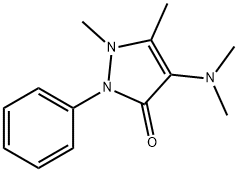
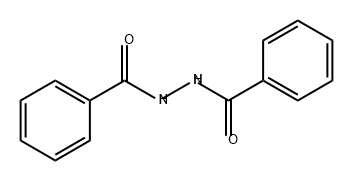



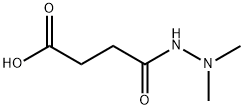
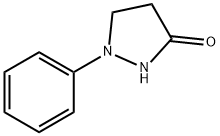
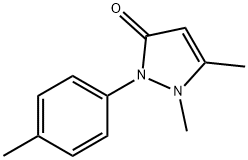
You may like
-
 Pyridine 99.5% HPLC /UV SpectroscopyView Details
Pyridine 99.5% HPLC /UV SpectroscopyView Details
110-86-1 -
 Guanine , 99%View Details
Guanine , 99%View Details
73-40-5 -
 Piperazine Spot supply, best priceView Details
Piperazine Spot supply, best priceView Details
110-85-0 -
 Potassium Hydroxide 90%View Details
Potassium Hydroxide 90%View Details
1310-58-3 -
 Dibutyl PhthalateView Details
Dibutyl PhthalateView Details
84-74-2 -
 Imidazole Spot supply, competitive priceView Details
Imidazole Spot supply, competitive priceView Details
288-32-4 -
 Octadecyl 3-(3,5-di-tert-butyl-4-hydroxyphenyl)propionate 98% (GC)View Details
Octadecyl 3-(3,5-di-tert-butyl-4-hydroxyphenyl)propionate 98% (GC)View Details
2082-79-3 -
 Thiourea 99% ARView Details
Thiourea 99% ARView Details
62-56-6
